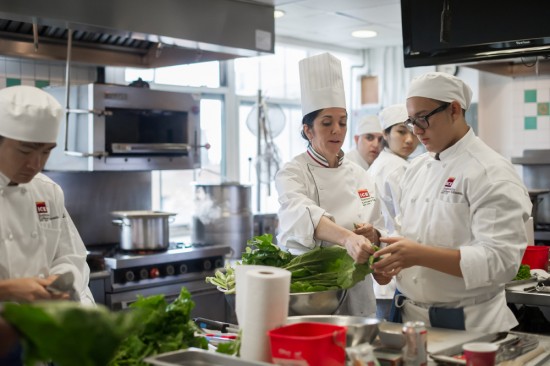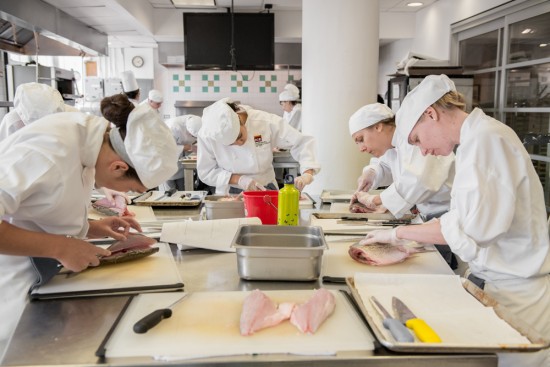Cooking, like all art forms, is a subjective medium. Just as fine artists or musicians have different styles, ask any group of professional cooks, and you’re sure to find varying perspectives on what makes food “good.” It would be nearly impossible to find a restaurant kitchen where all the chefs hail from the same place, hold the same beliefs or boast the same level of culinary experience—and the same holds true in a culinary school.
In my classroom alone, there is a 10-year age difference between the oldest and youngest students. Some of us have prior kitchen experience while others have none. In short, the unifying ingredient in any kitchen is, of course, the love of food and cooking.
According to ICE Chef Instructor and Program Director of Culinary Arts Sabrina Sexton, these differences allow people to bring something different to the classroom and are an essential aspect of the student experience. “The creative process is about being open and exposing ourselves to different things.
Having students from various backgrounds means that we’re bringing more than one perspective to the table. At ICE, we’re proud to say that our classrooms are consistently diverse.”

Unlike musicians or studio artists, restaurant chefs rarely have the opportunity to work alone. Producing a large quantity of food on a daily—even an hourly—basis is a team sport. Beyond knife skills, flavor pairings and cooking techniques, one of the core missions in the classrooms at ICE is to prepare students for becoming industry professionals—in other words, how to navigate the many personalities in the kitchen while making sure every dish reaches the table.
According to Chef Sabrina, kitchen work is always about teamwork: “There are very few jobs in the culinary industry where you do not rely on other people. Learning how to play a role in a large group while communicating with everyone else is an essential skill in the kitchen.” In other words, if one of your colleagues has a different style of working, you had better establish a productive way to work in harmony.
Another significant fact to acknowledge is that kitchen teams range in size. Some restaurants run with just two chefs while others have more than a dozen. Similarly, at ICE, you could have 14 students tackling a project; in another situation, it could be just five.
According to a fellow culinary student, Theresa Fesinstine, having a small class has underscored the importance of teamwork and accountability. “You feel the impact of being both mentally and physically present,” she explains. Working with a small team has also provided a stronger personal connection to the chef instructor, as a result of significant one-on-one feedback.

As my classmates and I work through a diverse checklist of skills and cuisines, this ever-varying classroom dynamic reflects the full spectrum of the culinary landscape in a way that a specific restaurant kitchen may not. For me, this has been one of the most valuable parts of my culinary school experience.
As students, we download tremendous amounts of knowledge from our instructors, but we also learn from one another—though we may fail to recognize the importance of these moments until long after they occur. Reflecting on my time at ICE thus far, it’s clear how essential it is to understand that we are each part of the greater whole. No matter our differences, we’re all operating with the same goal: to deliver a positive experience and a delicious plate of food to a fellow human being.
Ready to take your place in the kitchen? Click here to receive free information about ICE’s award-winning career programs.



